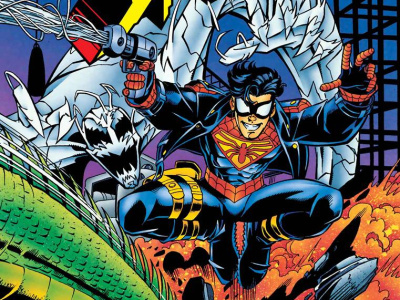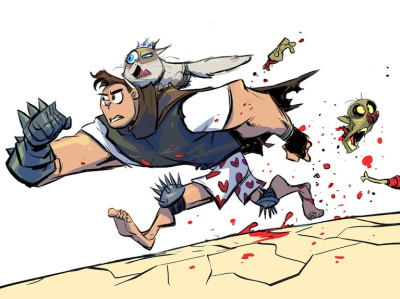As you may have noticed, the financial waters are getting a little bit choppy. Pro tip: if you’ve got a 401K or some equivalent, probably don’t check it right now. Stocks are down. Bonds are down. Inflation is eroding the value of cash faster than interest rates can keep up. And don’t get me started about cryptocurrency.
But this is ICv2, not The Financial Times, so as bad as thing are getting in other markets, what does all this mean for the market that interests us: comics and collectibles? Spoilers: I don’t know for sure, and everything in here should be taken with a healthy grain of "if he’s so smart, why isn’t he rich?" salt. That said, here are some of my thoughts on impact all this could have on the industry.
Bubble, bubble, toil and trouble. For the last few years, people with investments, whether stocks, bonds, real estate or other assets, have seen the values of those assets skyrocket. The S&P Index of stocks went up nearly 27% last year. That’s a lot. And when you’re playing with the house’s money, you’re more inclined to spend or invest optimistically, perhaps assuming that those rates of growth make it foolish to not pull the trigger on some item that’s likely to be more expensive in the future. Economists call this "the wealth effect," and it has a real, measurable impact on demand.
This kind of thinking is perfectly rational, and going against the grain has costs. People who didn’t want to get into the real estate market (or the comic art market) in 2016 because they thought it was overheated not only lost seven years of eye-watering gains, but also missed out on having something they wanted and probably could have afforded if they’d acted fast. Even if the market gives some of those financial gains back in a reversal, you don’t get the lost time back.
I believe this psychology explains a lot of the crazy gains we’ve seen in comics, art, sports and TCG cards, toys and just about any other collectible you can think of over the past few years. We’ve all been locked inside with nothing to spend money on, and meanwhile all around us, everyone seems to be making money from asset appreciation. Why not bid something crazy on that grail page, because even in worst case, if you have to turn around and sell it later, you’re sure to make money.
When everyone individually starts thinking like this, it has larger systemic impacts and becomes an economic force in itself. When everything is going well, we call that a "virtuous cycle." When it goes bad, we call it a bubble.
The case for the bears: a low tide sinks all boats. Once the train starts move backwards, though, it’s a different story. The most immediate result of financial market downturns like the ones we’re seeing is that people have less money: either outright losses in their portfolio or much lower unrealized gains. On the consumer side, that manifests when people fortunate enough to have some savings socked away feel less economically secure, and therefore less confident about making discretionary expenses like that amazing original art page, collectible toy, or fun-filled weekend at the comic convention.
Reluctant buyers are one part of the equation; motivated sellers are the other. There are always people who have to sell stuff to cover losses or maintain cash flow; that’s always part of the equation. But when large numbers of people start unloading inventory out of fear rather than greed, and fewer people are buying because they don’t feel like they can spare the coin, you end up with not enough money chasing too much stuff. Supply exceeds demand, prices fall, and more panicked sellers dump more stuff to get out before the house collapses. A reversal becomes a rout.
The collectibles market doesn’t have a market index or any broad public indicator of sentiment and direction. The best we’ve got are auction results (which seem to be going strong, see "Mile High Copy Of 'Superman' #1 Becomes The Most Expensive Comic Ever Sold"), and anecdotal reports of private sales. If things are going bad, we probably won’t know about it for a while. However, for the first time in the last few years, there are extrinsic reasons to believe the party might be slowing down if not ending for a while.
The case for the bulls: real value trumps imaginary value. One other well-known characteristic of bear markets is a phenomenon known as "flight to quality." That is, investors dump sketchy or speculative assets and double down on investments of proven value. In stocks, that means companies with a strong balance sheet and good cash flow; in bonds, it means AAA-rated securities. And for some people, that might mean collectibles.
What makes collectibles fundamentally sound? Intrinsically high demand, and intrinsically short supply. The former is provided by the huge explosion in consciousness of and interest in geek culture. Not only does everyone know who Batman and Spider-Man and Pokemon and the Mario Bros. are, thanks to Marvel, millions of people now know and care about Moon Knight, America Chavez and Groot. And as we all know, the supply of physical items is finite, especially in pristine condition.
With art, everything is a one-off, which is why people are tossing out mid-seven-figure estimates for what the original cover of Frank Miller and Lynn Varley’s The Dark Knight Returns #1 will fetch when it hits the auction block this month.
So notwithstanding the unwinding of assets in other markets, there’s a colorable argument that collectibles will actually benefit from a broader dip. As the prices of top-tier items continue to ascend out of site, collectors who are not super-rich will continue to bid up middle and lower-tier works, keeping prices healthy for the foreseeable future.
For the business side, less good news. While there might be a decent story for collectors and dealers, bad economic news is just plain bad for the publishing and retail industry. Growth this year has already been hamstrung by supply and labor shortages (either a byproduct or a cause of inflation, depending on who you ask). Rising interest rates and the prospect of recession will make things worse before they make things better.
More ominous is the fate of companies who recently benefited from capital infusions from deep-pocketed VCs or overseas investors. Not only do those investments look even shakier in a choppy market, the seemingly bottomless source of money going to creators might start to dry up.
The final fate of the 2022 economy isn’t written in ink yet. A lot of what’s been driving the negative news is stuff like the war in Ukraine, the lingering effects of the pandemic, and government policy decisions. If those things get better, the outlook might improve as well.
In the meantime, buckle up. Things may be about to get even more bumpy.
The opinions expressed in this column are solely those of the writer, and do not necessarily reflect the views of the editorial staff of ICv2.com.
Rob Salkowitz (@robsalk) is the author of Comic-Con and the Business of Pop Culture.

Column by Rob Salkowitz
Posted by Rob Salkowitz on May 16, 2022 @ 5:25 pm CT
MORE COMICS
Part of 1996 Marvel/DC Crossover
August 1, 2025
Writer Karl Kesel and artist Mike Wieringo are the creative team for the one-shot comic, which was first published in 1996 in the middle of a Marvel/DC crossover.
Crowdfunding Campaign Launches in October, Followed by Retail Release
August 1, 2025
Vault will crowdfund the graphic novel on the Backerkit platform in October, then release it to retail.
MORE COLUMNS
Column by Scott Thorne
July 28, 2025
This week, columnist Scott Thorne comments on the Edge of Eternities prerelease and on Magic: The Gathering news from the Hasbro earnings report.
Column by Rob Salkowitz
July 21, 2025
Columnist Rob Salkowitz lays out the Comic-Con panels of interest to industry professionals, current and aspiring creatives, educators, librarians and retailers.








